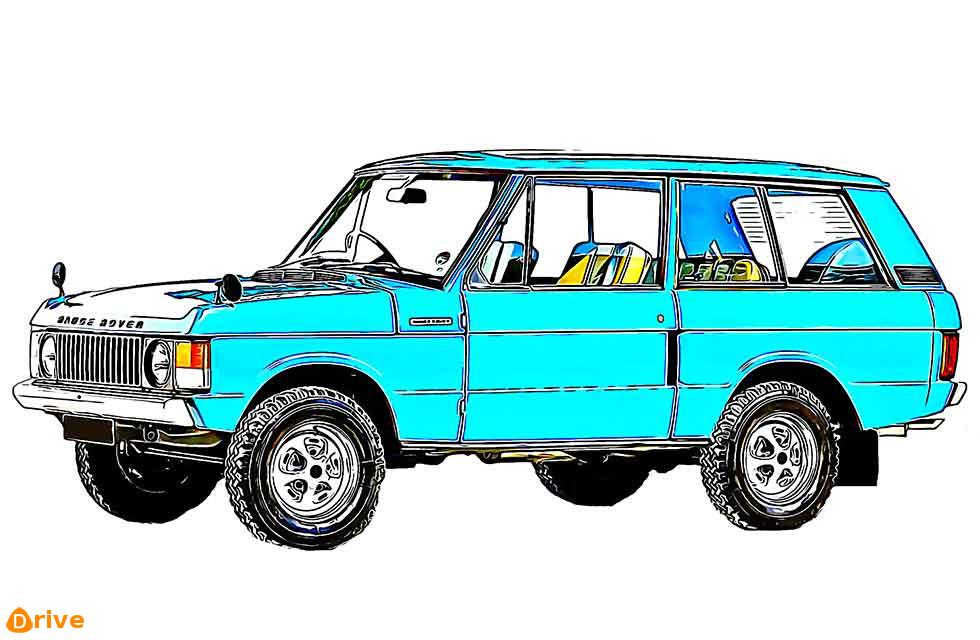Range Rover Generations… From the original Classic to the BMW-era car, we chart the values of the Range Rover over its first 40 years.
Classic (1970-1980)
As we went to press, our sister title Classic Car Buyer had on its front cover the legend ‘£70k Range Rover at auction’ and you don’t need to be a Land Rover expert to know that this kind of money is reserved for the classic iteration of the vehicle: specifically, the early two-door.

Price aggregator The Market (www.themarket. co.uk) offers price data for the last four years and we can see that even back at the tail end of 2014 the values of two-door Rangeys were solid: the average was already at £22,000. A few more affordable restoration projects brought the average down to the £16,000 mark in early 2015 but from here values rose dramatically, fuelled by Land Rover’s renewed interest in its own heritage.
By January 2016 the demand for expensively restored early Range Rovers saw the top price at a heady £57,000 while even the cheapest examples were fetching £11,000. Prices levelled off during the rest of 2016 with the average back at just over the £20,000 mark but they’ve been climbing since then. Last year the formal opening of JLR’s own Classic Works enterprise saw the top-end values rise once again, with a £70,000 sale in early 2018 bringing the average right back up again. Indeed, the most recent data suggests the entry ticket to the two-door Range Rover is now just over £17,000. That’s borne out by the advertisements today, with projects running from £8000 to £12,000 and original-spec runners (those not fitted with nonstandard diesel motors or later V8s) going for £16,000 to £20,000.
Classic (1981-1994)
Contrasting with the heady values of the two-door cars, values of the four-door Classic models are far more erratic. The market seems to love the late-model cars which feature larger injected V8s, higher spec and more modern specification with the pinnacle being the air-suspended 4.2-litre HSE and the post-1994 ‘soft dash’ models fitted with the Discovery fascia.
This means that the earlier four-door cars remain a more affordable prospect, with prices having been far less volatile over time. The Market shows the entry-level price for the pre- 1989 Range Rover has been around the £7000 mark since 2014, with fewer high-value sales to distort the average which has generally been around the £10,000 mark. Only recently has the average risen to the £12,000 level, contrasting with the late-model four-doors which enjoy an average value of around £15,000 having risen steadily since 2016. In fact £10,000 remains the entry price for these late-model Classics.
P38A (1994-2002)
The original Range Rover was a hard act to follow, a task made even trickier for Land Rover by the fact that the rest of the world’s car makers had long since woken up to the market for the ‘lifestyle’ multi-purpose leisure vehicle.
This explains Land Rover’s introduction of the Discovery. Technically a cheaper version of the Range Rover offering seven seats and a more modern style but using the older car’s chassis and running gear, it tackled the threat posed by the likes of the Shogun.
It also left the original Range Rover free to move even further upmarket, something which Land Rover capitalised upon to make the vehicle less macho and more car-like. After all, it was hoped to reposition the Range Rover as something of an alternative to top-end executive saloons from BMW and Mercedes.
This explains the slightly softer styling and the use of air suspension which gave the car such a bad reputation for reliability. Marque specialists today reckon the air suspension can be made to work reliably and although the BMW diesel was never really up to the job of hauling 2.2 tonnes of Range Rover around, the petrol option retained the Rover V8 and makes for an easy-to-own modern classic today.
Prices have yet to reflect the practical appeal of the P38A though, with the car firmly in the twilight it has occupied for the last several years. It was only in the latter half of last year that The Market’s data shows the entry price for the P38A climbing above the £3000 mark, reflecting the fact that the really cheap examples have disappeared from the market. The entry ticket today stands at around £6000 but the private ads tell a different story, with plenty of running, MoT’d examples on offer from as little as £2000. Indeed, go shopping with a budget of £5000 and you have a choice of some fine-looking cars. Take a look at the way the two-door Classic has gone and it might just be a sound buy.
L322 (2002-2012)
The third generation Range Rover is an intriguing model and was technically the first complete revision of the design since 1970: the P38A is generally accepted to be merely an extensive facelift of the original.
It’s a very different animal from its predecessors, sporting modern control electronics, a monocoque bodyshell and a new generation of air suspension all thanks to Land Rover’s then-owner BMW. The Bavarian firm also provided its muscular straight-six diesel and V8 powerplants to accompany the car’s push even further upmarket.
The L322 today is an affordable car though, with prices still on the downward trend as befits a modern car. The Market’s data shows the bottom end of the market as declining from £10,000 in 2014 to just £7000 today, with private ads offering cars for as little as £4000, with plenty of choice around the £5000 mark. Squint hard enough and the car doesn’t look that different from today’s £100,000 L405 model.
Late-model Classics have been rising for some time. The P38A remains the cheapest of the lot. Modern classic status can’t be far off for the L322. The early four-doors can still be an affordable prospect.





